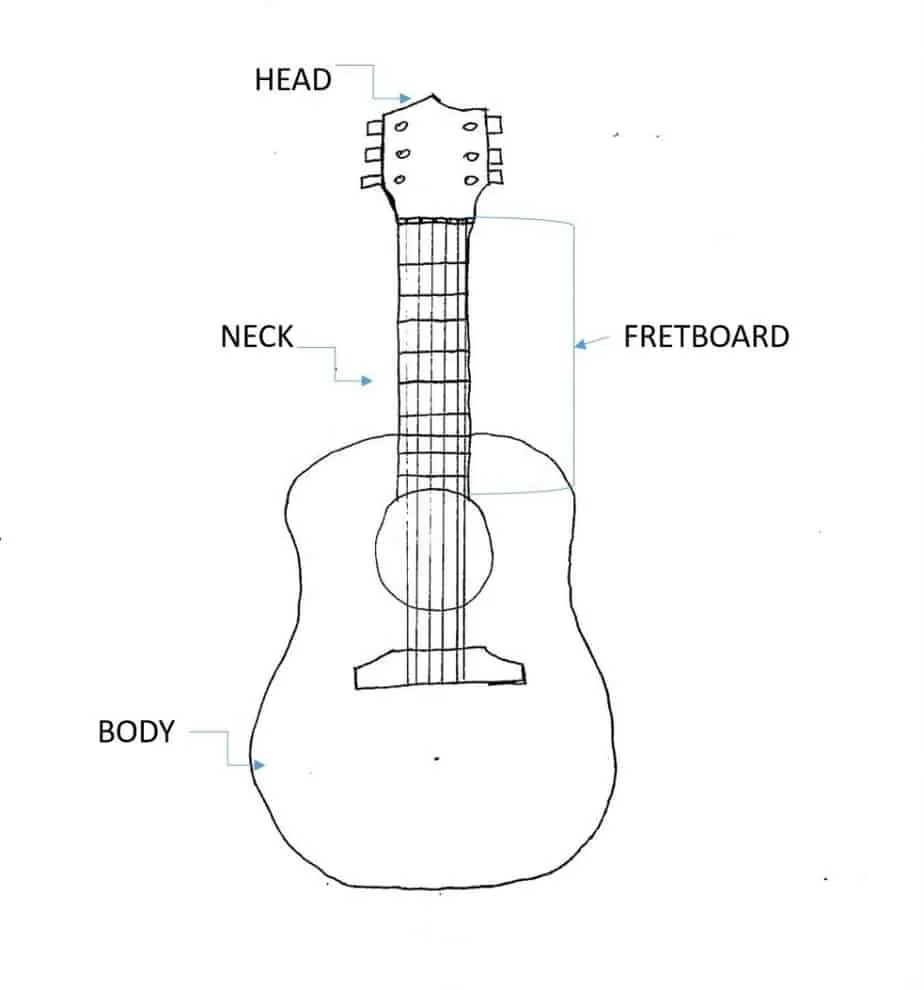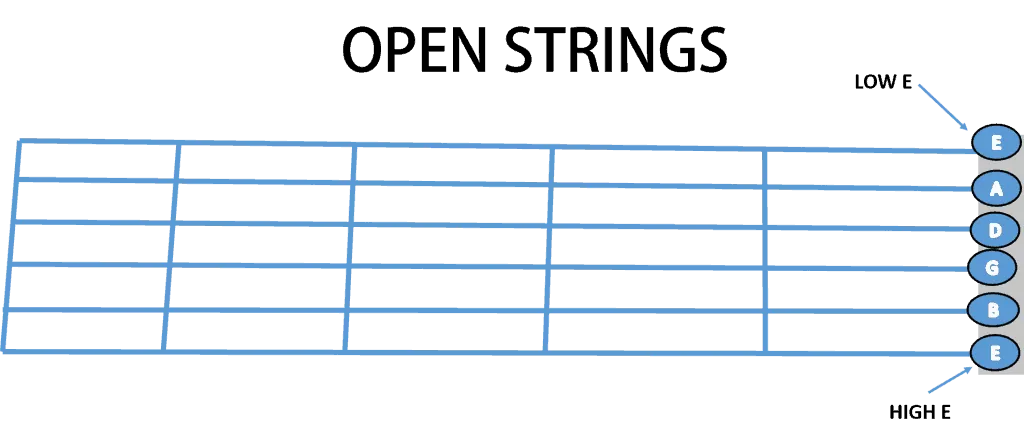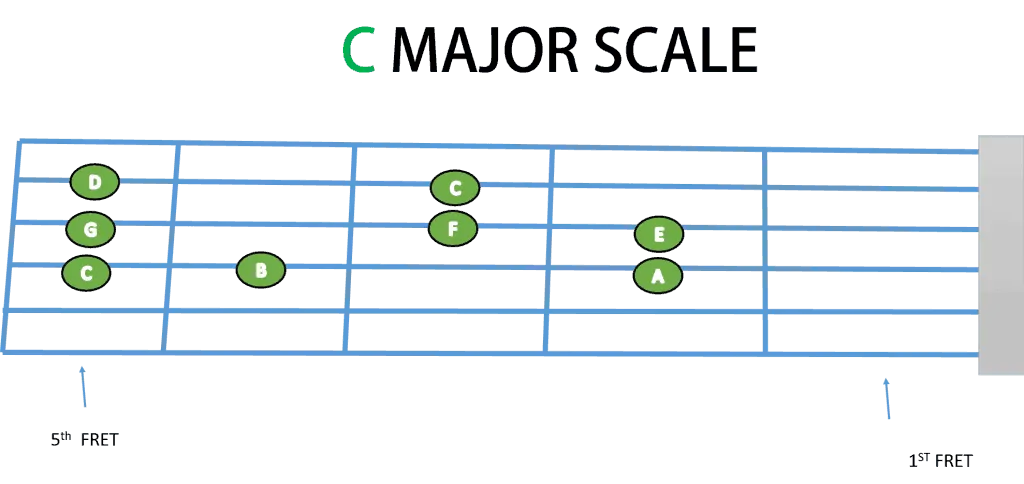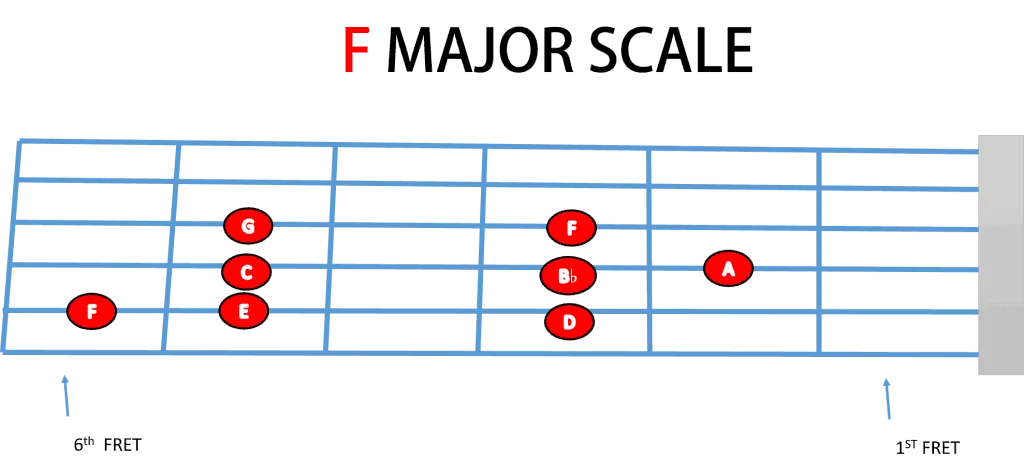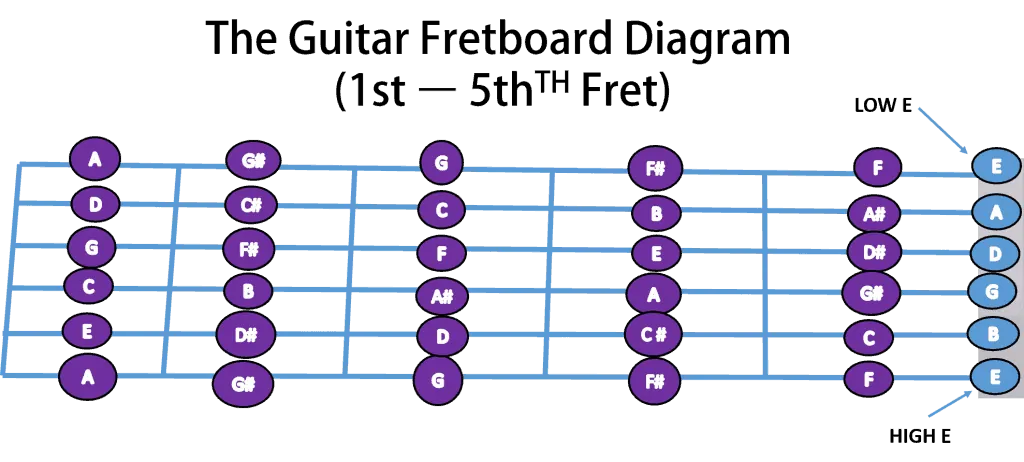Guitar fretboard/fingerboard exists all along the neck of a guitar. It is separated by frets. Within each fret includes notes that are played when holding down on the respective string. The fretboard is a major guitar part that connects the head to the body of the guitar. For the beginners here is a general outline and the position of the fretboard.
Contents
What is a Fretboard on Guitar?
Fretboard String by String
Getting to know your guitar
When you learn the basic guitar notes you will be able to play any song and gain more confidence as a guitarist.
OPEN STRINGS
For 6 string guitars the open strings are as follows:
6 String Guitar Open Strings
Note that for the purposes for this article references made will apply to the six string guitar. For the four string guitar (bass) the open strings, note by note are as follows:
Open Strings
G
D
A
E
How to Learn Guitar Fretboard
I have found that the best way to learn the fretboard is to learn the notes of a scale and their corresponding placements within each fret.
Learning the basics of notes
There are seven main musical notes that follow this note by note sequence:
A B C D E F G
These notes are then repeated to give the following sequence:
A B C D E F G–repeat– A B C D E F G–repeat– A B C D E F G
Musical notes further break down into the following sequence:
A A# B C C# D D# E F F# G G# –repeat– A A# B C C# D D# E F F# G G#
Sharps [#] represent a note being raised while Flats [♭] represent a note being lowered. Notes B to C and E to F are the only notes in the sequence that remain as they are and don’t include a sharp or a flat between them.
When playing the notes a tip to keep in mind is to visualize yourself travelling between each note. And that distance traveled between two notes is described as a semitone[S] and a tone [T]. Semitones represent the shortest distance between two notes, while a tone is the longest distance between two notes.
A A#/B B C C#/D D D#/E E F F#/G G G#/A A
[S] [T] [S] [S] [T] [S] [S]
All major scales consist of eight notes ascending in alphabetical order. More importantly learning these notes of a scale and where to place them with your hand on the fretboard is key. The following three musical scales are the best and quickest starting point to mastering the fretboard:
Top Scales to Learn
- G Major Scale
- C Major Scale
- F Major Scale
G Major Scale
The notes of this scale range from low to high as follows:
G A B C D E F# G
G Major Scale position on fingerboard
C Major Scale
The notes of this scale range from low to high as follows:
C D E F G A B C
C Major Scale position on fingerboard
F Major Scale
The notes of this scale range from low to high as follows:
F G A B♭ C D E F
F Major Scale position on fingerboard
The Guitar Fretboard Chart
Once you have mastered your first set of notes and their placements, all other notes will fall into place, it’s just a matter of continuing this alphabetical musical pattern.
The Guitar Fretboard Diagram
Guitar fingerboard diagram (with all notes first five frets)
You can practice your note placements with this blank fretboard diagram. As a practice exercise fill out this blank diagram of frets 6 – 10 to test your knowledge you’ve learnt so far.
Blank fretboard diagram
From Notes to Chords
Start by playing each note. Learn the note names of each open string and be able to recite them from memory, string by string.
After you have mastered each note and their placements then you can graduate to playing chords. Chords are a series of notes that are played simultaneously.
Quick practice song to master
A series of notes make up the fabric of a song. A great practice song for beginners to be more familiar with their fretboard is to play Do Re Mi, the iconic song from the Sound of Music. This song is played within the C major scale but the pattern can be repeated for the G major scale.
This could be a great choice for beginners who want to learn each note on each string quickly.
DO RE MI / Doe a Deer a female deer (Sound of Music Notes)
Here’s the song and its contributing notes so you can follow along with the melody:
C D E F G A B C
C D E C E – C E
D E F F E-D F
E F G E G E – G
F G A A G F A
G C D – E F – G A
A D E F G – A B
B E F G A B ^C
^C B A G F E C
Final Consideration
Understanding a fretboard doesn’t have to be complicated. So visualize it five frets at a time. Remember your sharps and flats. Practice easy nursery rhymes to work out your fingers then graduate to more complex songs and in time you’ll be playing any song as a skilled guitarist.

